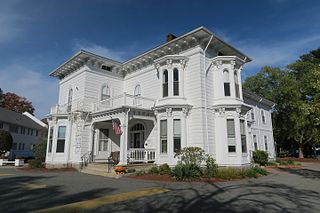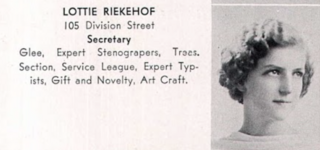
American Sign Language (ASL) is a natural language that serves as the predominant sign language of Deaf communities in the United States and most of Anglophone Canada. ASL is a complete and organized visual language that is expressed by employing both manual and nonmanual features. Besides North America, dialects of ASL and ASL-based creoles are used in many countries around the world, including much of West Africa and parts of Southeast Asia. ASL is also widely learned as a second language, serving as a lingua franca. ASL is most closely related to French Sign Language (LSF). It has been proposed that ASL is a creole language of LSF, although ASL shows features atypical of creole languages, such as agglutinative morphology.

Sign languages are languages that use the visual-manual modality to convey meaning, instead of spoken words. Sign languages are expressed through manual articulation in combination with non-manual markers. Sign languages are full-fledged natural languages with their own grammar and lexicon. Sign languages are not universal and are usually not mutually intelligible, although there are also similarities among different sign languages.
Auslan is the sign language used by the majority of the Australian Deaf community. The term Auslan is a portmanteau of "Australian Sign Language", coined by Trevor Johnston in the 1980s, although the language itself is much older. Auslan is related to British Sign Language (BSL) and New Zealand Sign Language (NZSL); the three have descended from the same parent language, and together comprise the BANZSL language family. Auslan has also been influenced by Irish Sign Language (ISL) and more recently has borrowed signs from American Sign Language (ASL).
Linda Bove Waterstreet is a Deaf American actress, her most notable role being a fictionalized version of herself in the PBS children's series Sesame Street from 1971 to 2002. Bove was the first Deaf actress to be a member of the program's recurring cast.

Deaf culture is the set of social beliefs, behaviors, art, literary traditions, history, values, and shared institutions of communities that are influenced by deafness and which use sign languages as the main means of communication. When used as a cultural label especially within the culture, the word deaf is often written with a capital D and referred to as "big D Deaf" in speech and sign. When used as a label for the audiological condition, it is written with a lower case d. Carl G. Croneberg coined the term "Deaf Culture" and he was the first to discuss analogies between Deaf and hearing cultures in his appendices C/D of the 1965 Dictionary of American Sign Language.
Signing Exact English is a system of manual communication that strives to be an exact representation of English language vocabulary and grammar. It is one of a number of such systems in use in English-speaking countries. It is related to Seeing Essential English (SEE-I), a manual sign system created in 1945, based on the morphemes of English words. SEE-II models much of its sign vocabulary from American Sign Language (ASL), but modifies the handshapes used in ASL in order to use the handshape of the first letter of the corresponding English word.
Deanne Bray is an American actress. Bray was born deaf and is bilingual in American Sign Language and English.
A contact sign language, or contact sign, is a variety or style of language that arises from contact between deaf individuals using a sign language and hearing individuals using an oral language. Contact languages also arise between different sign languages, although the term pidgin rather than contact sign is used to describe such phenomena.

The Learning Center for the Deaf (TLC) is a Framingham, Massachusetts-based non-profit organization and school serving deaf and hard-of-hearing children and adults. The mission of The Learning Center for the Deaf is to ensure that all deaf and hard of hearing children and adults thrive by having the knowledge, opportunity and power to design the future of their choice.

Jane Fernandes is a Deaf American educator and social justice advocate. As of August 2021, Fernandes is the President of Antioch College in Yellow Springs, Ohio. She previously served as president of Guilford College from 2014 to 2021.
In the United States, deaf culture was born in Connecticut in 1817 at the American School for the Deaf, when a deaf teacher from France, Laurent Clerc, was recruited by Thomas Gallaudet to help found the new institution. Under the guidance and instruction of Clerc in language and ways of living, deaf American students began to evolve their own strategies for communication and for living, which became the kernel for the development of American Deaf culture.
Singapore Sign Language, or SgSL, is the native sign language used by the deaf and hard of hearing in Singapore, developed over six decades since the setting up of the first school for the Deaf in 1954. Since Singapore's independence in 1965, the Singapore deaf community has had to adapt to many linguistic changes. Today, the local deaf community recognises Singapore Sign Language (SgSL) as a reflection of Singapore's diverse linguistic culture. SgSL is influenced by Shanghainese Sign Language (SSL), British Sign Language(BSL), Australian Sign Language(Auslan), American Sign Language (ASL), Signing Exact English (SEE-II) and locally developed signs.
American Sign Language literature is one of the most important shared cultural experiences in the American deaf community. Literary genres initially developed in residential Deaf institutes, such as American School for the Deaf in Hartford, Connecticut, which is where American Sign Language developed as a language in the early 19th century. There are many genres of ASL literature, such as narratives of personal experience, poetry, cinematographic stories, folktales, translated works, original fiction and stories with handshape constraints. Authors of ASL literature use their body as the text of their work, which is visually read and comprehended by their audience viewers. In the early development of ASL literary genres, the works were generally not analyzed as written texts are, but the increased dissemination of ASL literature on video has led to greater analysis of these genres.
The sociolinguistics of sign languages is the application of sociolinguistic principles to the study of sign languages. The study of sociolinguistics in the American Deaf community did not start until the 1960s. Until recently, the study of sign language and sociolinguistics has existed in two separate domains. Nonetheless, now it is clear that many sociolinguistic aspects do not depend on modality and that the combined examination of sociolinguistics and sign language offers countless opportunities to test and understand sociolinguistic theories. The sociolinguistics of sign languages focuses on the study of the relationship between social variables and linguistic variables and their effect on sign languages. The social variables external from language include age, region, social class, ethnicity, and sex. External factors are social by nature and may correlate with the behavior of the linguistic variable. The choices made of internal linguistic variant forms are systematically constrained by a range of factors at both the linguistic and the social levels. The internal variables are linguistic in nature: a sound, a handshape, and a syntactic structure. What makes the sociolinguistics of sign language different from the sociolinguistics of spoken languages is that sign languages have several variables both internal and external to the language that are unique to the Deaf community. Such variables include the audiological status of a signer's parents, age of acquisition, and educational background. There exist perceptions of socioeconomic status and variation of "grassroots" deaf people and middle-class deaf professionals, but this has not been studied in a systematic way. "The sociolinguistic reality of these perceptions has yet to be explored". Many variations in dialects correspond or reflect the values of particular identities of a community.

Marie Jean Philip was a leader in both the American and international Deaf community. She advocated for the right to a natural sign language for Deaf people. Marie was one of the original researchers studying ASL and Deaf Culture. She was active in establishing American Sign Language (ASL) as a recognized language in the colleges of Massachusetts in the early 1980s. Later, Marie was the Bilingual-Bicultural Coordinator at The Learning Center for the Deaf in Framingham, Massachusetts.

Lottie Louise Riekehof was an American Sign Language interpreter, author, and a pioneer in the field of professional sign language interpreting. She wrote one of the first curriculums for interpreter educators, and trained interpreters and interpreter educators all over the world.

Amber Galloway is a sign language interpreter specializing in the interpretation of concerts and music festivals, especially rap/hip-hop, into American Sign Language (ASL). She has been described as "..the most recognizable sign language interpreter in the [United States]."
Marla Berkowitz is an American Sign Language (ASL) interpreter. Berkowitz is the only ASL Certified Deaf Interpreter in the US state of Ohio. During the 2020 coronavirus pandemic, she became known because of her interpretation of Ohio governor Mike DeWine's daily press conferences.
Dr. Laurene Simms is a Deaf American educator and advocate. She is the Chief Bilingual Officer at Gallaudet University.

47 The American Sign Language and English Secondary School, is a public high school for the deaf in Kips Bay, Manhattan, New York City. Operated by the New York City Department of Education, it was previously known as "47" The American Sign Language and English Dual Language High School, Junior High School 47M, School for the Deaf, or Junior High School 47.








